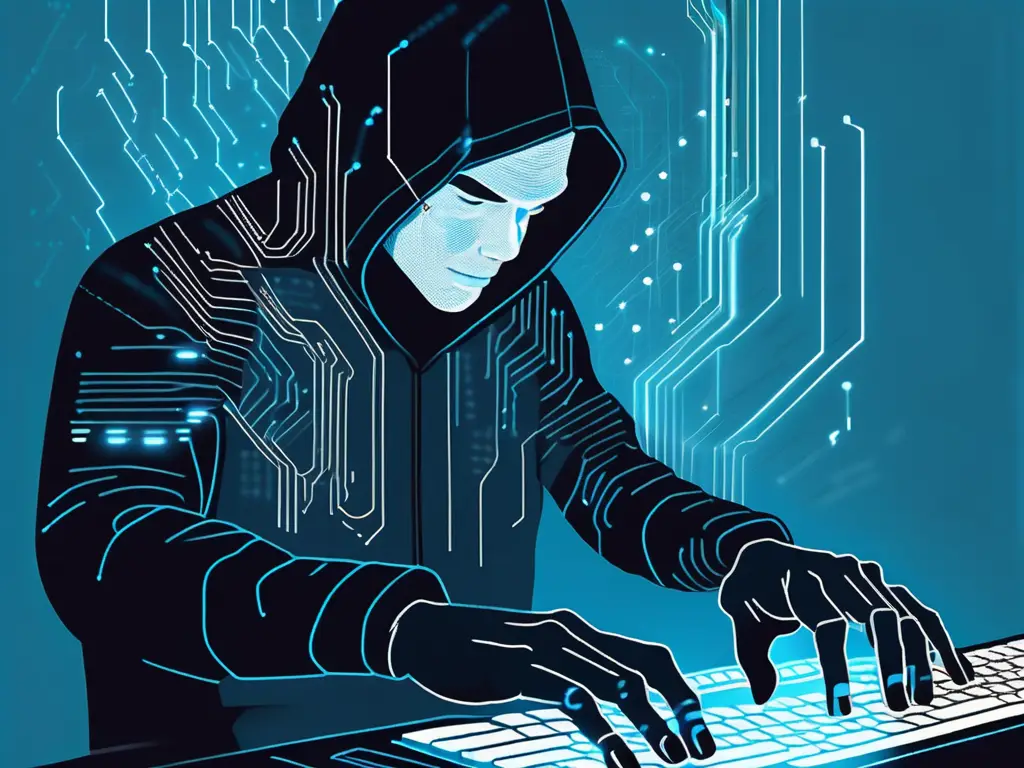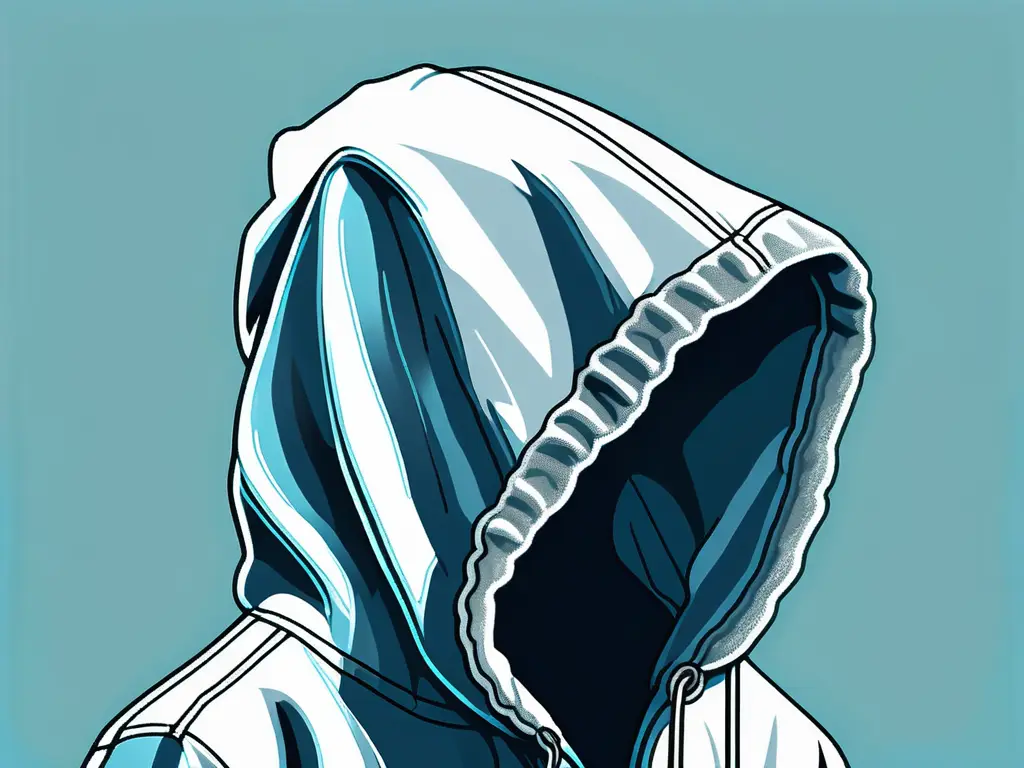When you think of a hacker, what image comes to mind? Chances are, you envision someone huddled over a computer in a dimly lit room, their face hidden in the shadows by a menacing hoodie. But have you ever wondered why hackers are always depicted with hoodies? In this article, we will explore the origins of this stereotype, the psychology behind it, and its impact on the world of cybersecurity.
Understanding the Hacker Stereotype
It’s no secret that hackers have been portrayed as villains in popular culture for decades. From movies to TV shows, the image of a hacker in a hoodie has become synonymous with cybercrime and mischief. But where did this stereotype come from?

The Origin of the Hoodie Symbolism
The association between hackers and hoodies can be traced back to the 1980s and 1990s, when the world began to grasp the concept of computer hacking. At the time, hackers were often depicted as young, rebellious individuals who went against societal norms. With its ability to obscure one’s identity, the hoodie became a powerful symbol of anonymity.
Choosing a hoodie as the hacker’s attire was not merely a fashion statement but a practical consideration. In the early days of hacking, individuals often worked in dimly lit basements or clandestine locations, where the hoodie provided a sense of comfort and security, shielding them from distractions and prying eyes.
Media Influence on the Hacker Image
As the media caught wind of this emerging subculture, they quickly capitalized on the hoodie-wearing hacker archetype. Newspapers and magazines began featuring articles and stories perpetuating the stereotype, cementing the association between hackers and hoodies in the public’s consciousness.
Popular culture did not limit its portrayal of hackers to their attire. The media often sensationalized hacking activities, portraying hackers as masterminds capable of bringing down entire systems with a few keystrokes. This exaggerated image further solidified the hacker stereotype in the minds of the general public, creating a sense of fear and fascination around the world of hacking.
The Psychology Behind the Hoodie
But why do hackers themselves choose to don hoodies? Is there a psychological aspect to this fashion choice?

Delving deeper into hacker culture and psychology, the hoodie emerges as a multifaceted garment beyond mere fashion. It is a powerful tool for hackers to navigate the complex landscape of cybersecurity and digital anonymity.
Anonymity and the Hoodie
One of the main reasons hackers opt for hoodies is the desire for anonymity. In the online world, where identities can easily be concealed, a hoodie can further obscure one’s face and make it harder for authorities to identify them. It’s like wearing a digital mask, allowing hackers to operate in the shadows.
The hoodie’s ability to shield the wearer from prying eyes extends beyond the digital realm. In physical spaces, hackers can effortlessly blend into crowds, their features hidden by the hood, adding another layer of anonymity to their persona.
The Hoodie as a Symbol of Rebellion
Additionally, the hoodie serves as a symbol of rebellion for many hackers. By wearing a hoodie, they are breaking free from the societal norms and expectations placed upon them. It represents their rejection of the status quo and desire to challenge authority.
The hoodie’s history as a garment associated with counterculture movements adds to its allure for hackers. From its origins in the hip-hop scene to its adoption by tech innovators, the hoodie carries a legacy of defiance and nonconformity that resonates with those who operate on the fringes of society.
The Reality of Hacking and Hackers
While getting caught up in the hacker stereotype is easy, it’s important to remember that not all hackers fit this narrow mold.
Exploring the world of hacking reveals a complex and multifaceted community that goes beyond the clichés often portrayed in popular media. Hackers are not just individuals lurking in the shadows wearing hoodies; they are skilled professionals, hobbyists, activists, and even ethical hackers who work to strengthen cybersecurity.
Debunking the Hoodie Myth
The reality is that hackers come in all shapes and sizes, and their choice of attire has little to do with their abilities. Many hackers prefer to blend in and not draw attention to themselves, opting for more inconspicuous clothing. So, while the hoodie-wearing hacker might make for a compelling Hollywood character, it’s far from an accurate representation of hackers in the real world.
The stereotype of the hoodie-clad hacker perpetuates a misconception that all hackers engage in illegal activities. In truth, there are ethical hackers, also known as white-hat hackers, who use their skills to uncover vulnerabilities and enhance cybersecurity defenses.
The Diverse Faces of Modern Hackers
Hackers come from all walks of life. They can be young or old, male or female, and they certainly don’t exclusively wear hoodies. By pigeonholing hackers into a single stereotype, we are doing a disservice to the diverse range of individuals contributing to cybersecurity.
The field of hacking is constantly evolving, with new technologies and techniques emerging regularly. Hackers leverage their creativity and problem-solving skills to navigate the ever-changing cybersecurity landscape, making valuable contributions to the digital world.
The Impact of Stereotypes on Cybersecurity
So, why does it matter if hackers are always depicted with hoodies in the media?
When we delve deeper into the realm of cybersecurity and the portrayal of hackers in popular culture, it becomes evident that these stereotypes hold significant consequences beyond mere aesthetics. The pervasive image of hackers in hoodies perpetuates a narrow and misleading perception of individuals involved in cybersecurity and has tangible effects on how society approaches and addresses cyber threats.
The Danger of Over-Simplification
By perpetuating stereotypes, we risk a distorted view of the hacking community. This can lead to misunderstandings and misjudgments, hindering our ability to combat cybercrime effectively. Stereotypes oversimplify a complex issue, perpetuating the notion that all hackers are criminals when, in reality, many are working diligently to protect systems and enhance cybersecurity.
The oversimplification of hackers as nefarious individuals in hoodies fails to capture the diverse motivations and backgrounds of those involved in cybersecurity. From ethical hackers conducting penetration testing to security researchers uncovering vulnerabilities, the spectrum of roles within the cybersecurity landscape is vast and multifaceted.
Promoting a More Accurate Image of Hackers
It’s time we move past the narrow view of hackers in hoodies and embrace a more accurate representation. By highlighting the diversity within the hacking community and focusing on their positive contributions, we can promote a better understanding of their role in safeguarding our digital world.
By shedding light on the multifaceted nature of cybersecurity professionals and debunking stereotypes, we can foster a more inclusive and informed dialogue surrounding cyber threats and defenses. Embracing a nuanced perspective on hackers empowers individuals within the cybersecurity field and cultivates a more resilient and collaborative approach to tackling the evolving challenges of the digital age.
Changing the Hacker Narrative
So, how can we change how hackers are portrayed in the media and society?

The Role of Education in Shaping Perceptions
Education plays a crucial role in dispelling misconceptions about hackers. By teaching the public about the different types of hackers and their motivations, we can help break down the stereotypes and foster a more nuanced understanding of the cybersecurity landscape. Knowledge is power, and we can reshape the hacker narrative by empowering individuals with accurate information.
The Future of Hacker Representation
As our understanding of hacking and cybersecurity continues to evolve, it’s crucial that media portrayals accurately reflect this changing landscape. By showcasing hackers’ true diversity and motivations, we can create a more inclusive and nuanced image of this vital community.
In today’s interconnected world, the role of hackers has become increasingly complex and multifaceted. Hackers are not just individuals in dark basements trying to cause chaos; they can also be cybersecurity experts working tirelessly to protect systems from malicious attacks. By highlighting the hacker community’s diverse skill sets and motivations, we can challenge the one-dimensional portrayals that have dominated popular culture.
Recognizing that hackers come from all walks of life and backgrounds is essential. The image of a lone wolf hacker is often exaggerated, overshadowing the collaborative nature of many hacking communities. From ethical hackers who work to identify vulnerabilities before they can be exploited to hacktivists advocating for social or political change, the spectrum of hacker identities is vast and varied.
As we challenge the stereotypes and embrace the true diversity of hackers, it’s clear that cybersecurity is a critical concern for businesses in every sector. Blue Goat Cyber, a Veteran-Owned leader in cybersecurity excellence, stands ready to guide you through the complexities of digital security. With our extensive experience in medical device cybersecurity, penetration testing, and compliance, we are committed to protecting your business against the ever-evolving cyber threats. Don’t let outdated perceptions hinder your cybersecurity strategy. Contact us today for cybersecurity help, and let us tailor a robust security solution that empowers your business to thrive in the digital age with confidence and success.


